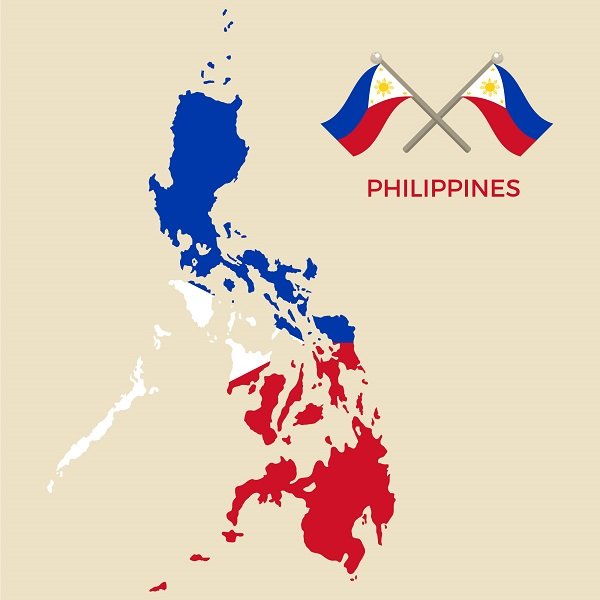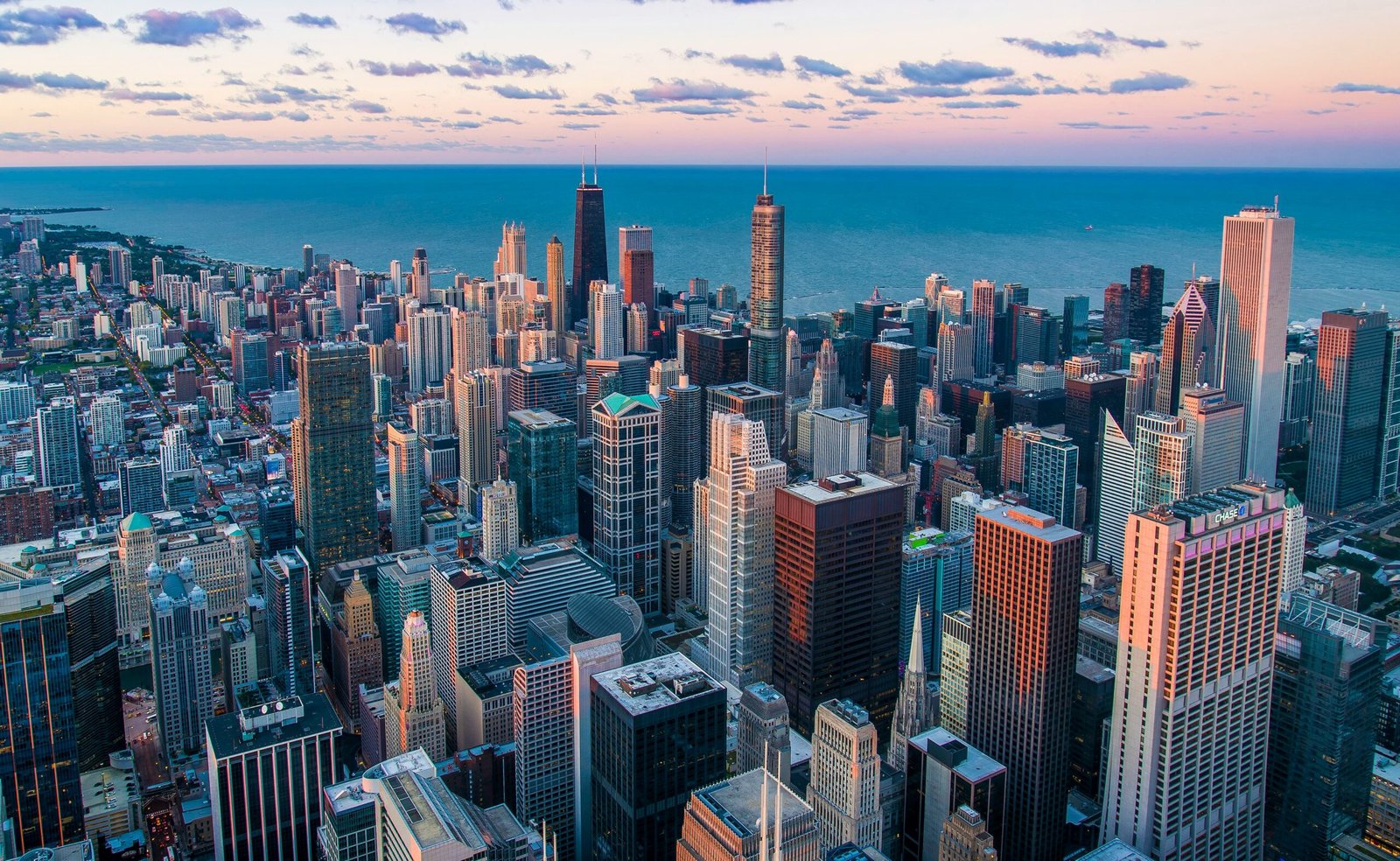
Introduction to the Philippines
The Philippines, officially known as the Republic of the Philippines, is a Southeast Asian country situated in the western Pacific Ocean. This archipelagic nation is composed of approximately 7,641 islands, making it one of the largest archipelagos in the world. Spread across these islands are 81 provinces grouped into 17 regions, each contributing to the country’s rich tapestry of cultural, historical, and geographical diversity.
Geographically, the Philippines lies between Taiwan to the north and Borneo to the south. To the east is the Philippine Sea, while the South China Sea borders it to the west. The strategic position of the Philippines has historically made it a crucial maritime crossroads, facilitating trade and cultural exchanges between Asia, Oceania, and the rest of the world.
The population of the Philippines is over 110 million, making it the 13th most populous country globally. The capital city, Manila, alongside its metropolitan area, Metro Manila, is a bustling urban center and a key economic hub. However, the nation’s cultural heart extends far beyond its capital, reflecting a diverse heritage influenced by centuries of indigenous traditions, Spanish colonization, American governance, and various Asian influences.
Historically, the Philippines has a rich narrative that includes significant periods such as the Spanish colonization starting in 1521, the Philippine Revolution, and the subsequent American period following the Spanish-American War. The country gained its independence on July 4, 1946, marking the emergence of a sovereign state with a unique blend of eastern and western cultures.
Culturally, the Philippines is a mosaic of languages, traditions, and practices. There are over 170 languages spoken across the islands, with Filipino and English serving as the official languages. Festivals, known locally as “fiestas,” are celebrated with fervor throughout the country, showcasing the vibrant and resilient spirit of the Filipino people.
Understanding the map of the Philippines goes beyond mere geography; it offers a glimpse into the historical evolution and cultural richness that define this archipelago. This comprehensive guide aims to delve deeper into these aspects, providing a broader perspective on what makes the Philippines a unique and fascinating country.
Geographic Regions and Divisions
The map of the Philippines is distinctly divided into three primary geographical regions: Luzon, Visayas, and Mindanao. Each region is characterized by unique features that contribute to the diverse landscape and cultural tapestry of the country.
Luzon is the largest and most populous island group, encompassing the northern part of the Philippines. This region is known for its varied topography, ranging from the mountainous terrains of the Cordillera Administrative Region to the flat plains of Central Luzon. The climatic conditions in Luzon vary significantly, with the western part experiencing pronounced dry and wet seasons, while the eastern part receives rainfall year-round. Key cities in Luzon include Manila, the bustling capital city, and Quezon City, known for its vibrant urban life. Notable landmarks such as the Banaue Rice Terraces and Mount Mayon, an active volcano with a perfectly symmetrical cone, highlight the region’s natural beauty.
Visayas, centrally located on the map of the Philippines, is an archipelago of islands known for their scenic coastlines and rich marine biodiversity. The region’s topography is predominantly coastal with rolling hills and low mountain ranges. The climate in the Visayas is generally tropical, with relatively consistent temperatures and substantial rainfall throughout the year. Key cities such as Cebu City, often referred to as the “Queen City of the South,” and Iloilo City, known for its historical and cultural significance, are major urban centers. Notable landmarks include the Chocolate Hills in Bohol and the pristine beaches of Boracay Island.
Mindanao, the southernmost region, is the second largest island group in the Philippines. It is characterized by diverse landscapes that include mountain ranges, valleys, and extensive river systems. The climate varies from tropical rainforest in the eastern regions to tropical savanna in the western parts. Major cities like Davao City, known for its durian fruit and Mount Apo, the highest peak in the Philippines, and Cagayan de Oro, a gateway to Northern Mindanao, are pivotal urban centers. Significant landmarks such as the Maria Cristina Falls and Lake Sebu add to the region’s allure.
Understanding the geographic regions and divisions is essential for appreciating the diverse natural and cultural heritage depicted on the map of the Philippines.
Major Islands and Island Groups
The Philippines is an archipelago comprising over 7,000 islands, making its geographical layout both diverse and complex. Among these, three major islands stand out due to their size, population, and significance: Luzon, Mindanao, and Palawan. Each of these islands contributes uniquely to the country’s cultural and natural landscape.
Luzon, the largest and most populous island, is situated in the northern part of the Philippines. It is home to the capital city, Manila, and serves as the political and economic heart of the nation. Luzon’s diverse topography includes the Cordillera Central mountain range, the fertile plains of Central Luzon, and the scenic coastline along the South China Sea. Significant landmarks such as the Banaue Rice Terraces and Mayon Volcano highlight Luzon’s rich natural heritage.
Mindanao, the second-largest island, is located in the southern region. Known for its robust agricultural industry, Mindanao produces a substantial portion of the country’s food supply, including bananas, pineapples, and coconuts. The island is also renowned for its diverse cultures and traditions, influenced by various indigenous groups and Muslim communities. Geographically, Mindanao features notable landmarks such as Mount Apo, the highest peak in the Philippines, and the vast expanse of the Agusan Marsh.
Palawan, often dubbed the “Last Frontier,” stretches southwest from Luzon towards Borneo. This island is celebrated for its unspoiled natural beauty, boasting crystal-clear waters, pristine beaches, and an abundance of marine life. The Puerto Princesa Subterranean River National Park, a UNESCO World Heritage site, and the stunning limestone cliffs of El Nido are among Palawan’s most remarkable attractions.
In addition to these major islands, the Philippines is divided into several significant island groups. The Visayas, centrally located, consist of numerous islands including Cebu, Bohol, and Panay. This region is known for its vibrant festivals, historical sites, and beautiful beaches. The Batanes Islands, located in the far north, are famous for their rugged landscapes and traditional Ivatan stone houses. Lastly, the Sulu Archipelago, spanning the southwestern part of the country, is an area rich in cultural diversity and marine biodiversity, with the Tubbataha Reefs Natural Park being a notable highlight.
The map of the Philippines reveals a tapestry of islands, each with its distinct features and significance, reflecting the archipelago’s rich natural and cultural heritage.
Bodies of Water
The Philippines, an archipelago of over 7,000 islands, is surrounded and enriched by a myriad of bodies of water. Encircling this Southeast Asian nation are the vast Philippine Sea to the east, the South China Sea to the west, and the Sulu Sea to the southwest. These significant bodies of water not only shape the country’s geography but also play a crucial role in its climate, economy, and the daily lives of its inhabitants.
Prominent within the map of the Philippines are its numerous rivers, lakes, and bays. Among the major rivers, the Cagayan River stands out as the longest, coursing through the northern part of Luzon and providing vital water resources for agriculture and daily consumption. Another significant river is the Pasig River, which flows through the capital, Manila, serving as a historical and commercial lifeline.
Lakes also feature prominently on the map of the Philippines, with Laguna de Bay being the largest. This expansive lake, situated on the island of Luzon, supports a diverse ecosystem and is a key source of freshwater fish, contributing to the local economy. In the southern region, Lake Lanao in Mindanao is another notable body of water, revered for its cultural and economic importance to the Maranao people.
Manila Bay, a natural harbor in Luzon, is one of the most famous bays in the Philippines. It is pivotal to the nation’s shipping and trade industries, making it a bustling hub of economic activity. Similarly, the bays of Subic and Batangas are significant for their strategic and economic contributions, hosting naval bases and industrial ports.
The influence of these bodies of water extends to the climate of the Philippines, which is characterized by a tropical maritime climate. The surrounding seas moderate the temperature, bringing about two distinct seasons: the wet season and the dry season. This climatic pattern directly impacts agricultural cycles, fishing activities, and the overall lifestyle of the Filipino people.
In summary, the diverse and abundant bodies of water depicted on the map of the Philippines are integral to the nation’s climate, economy, and way of life. Their presence underscores the archipelago’s unique geographical and cultural landscape, making the Philippines a maritime nation with a rich and dynamic connection to its waters.
Mountains and Volcanoes
The Philippines, an archipelago known for its diverse landscapes, boasts a variety of mountainous regions and active volcanoes. Prominent among its mountain ranges is the Cordillera Central, located in northern Luzon. This extensive range is home to the highest peak in Luzon, Mount Pulag, which stands at approximately 2,926 meters. The Cordillera Central is not just a geographical landmark; it is also a cultural bastion for indigenous communities such as the Ifugao, Kalinga, and Igorot, who have thrived in these highlands for centuries.
Another significant mountain range is the Sierra Madre, stretching over 500 kilometers along the eastern coast of Luzon. Known as the backbone of Luzon, the Sierra Madre plays a crucial role in weather patterns and ecosystem diversity. Its forests serve as a vital buffer against typhoons, protecting inland areas from severe weather impacts. These mountains are also home to unique flora and fauna, some of which are endemic to the region.
The volcanic landscape of the Philippines is equally compelling. Mount Mayon, renowned for its near-perfect conical shape, is one of the most active volcanoes in the country. Located in the Bicol Region, it has erupted over 50 times in the past 400 years, with its most destructive eruption occurring in 1814. Despite its volatility, Mount Mayon remains a symbol of natural beauty and resilience.
Taal Volcano, situated on the island of Luzon, is another iconic feature of the Philippine map. It is unique due to its location within a lake, forming a crater lake on an island in a larger lake. Taal’s eruptions, though less frequent, can be highly explosive, with the most recent significant activity recorded in January 2020.
Mount Pinatubo, whose cataclysmic eruption in 1991 ranks as one of the largest in the 20th century, dramatically altered the landscape and climate. The eruption produced vast amounts of ash and sulphur dioxide, affecting global temperatures. Today, the caldera formed by the explosion has become a serene lake, attracting both scientists and tourists.
These mountainous and volcanic features are not just geographical landmarks; they are deeply intertwined with the cultural and historical fabric of the Philippines. They influence local traditions, agricultural practices, and even the daily lives of those who reside in their shadows. Understanding the map of the Philippines, therefore, necessitates an appreciation of these majestic and potent natural features.
Climate and Weather Patterns
The map of the Philippines reveals a country characterized by diverse climate zones, primarily influenced by its geographical location in Southeast Asia. The Philippines experiences three main types of climate: tropical rainforest, tropical savanna, and tropical monsoon. These climate zones contribute to the country’s rich biodiversity and varied ecosystems.
The tropical rainforest climate is prevalent in regions such as Samar, Leyte, and parts of Mindanao. These areas receive significant rainfall throughout the year, fostering lush vegetation and dense forests. On the other hand, the tropical savanna climate is observed in parts of central Luzon and Mindanao, where there is a distinct dry season. This climate is typified by grasslands and scattered trees. The tropical monsoon climate is most pronounced in western Luzon, including Metro Manila, and involves a marked wet season followed by a dry period.
The Philippines’ climate is heavily influenced by monsoons, which dictate the wet and dry seasons. The southwest monsoon, known as “Habagat,” brings heavy rains from June to October, while the northeast monsoon, or “Amihan,” ushers in cooler, drier air from November to April. These monsoons play a crucial role in the country’s agriculture, as rice and other crops are closely tied to the timing of the rainy season.
Additionally, the Philippines is frequently affected by typhoons, especially from July to October. Typhoons can have devastating impacts, causing flooding, landslides, and damage to infrastructure. Regions such as the eastern Visayas and Bicol are particularly vulnerable due to their location along the Pacific typhoon belt.
The varied climate across the map of the Philippines significantly influences daily life, agriculture, and tourism. Farmers plan their planting and harvesting schedules around the seasons, while the tourism industry must consider weather patterns when promoting travel destinations. For instance, beach resorts in Palawan and Boracay see peak visitor numbers during the dry season, when sunny weather is more reliable.
Biodiversity and Natural Resources
The Philippines is a biodiversity hotspot, boasting an array of flora and fauna that are both unique and abundant. The country’s tropical rainforests are home to a myriad of plant species, many of which are endemic. These dense forests are not only crucial for maintaining ecological balance but also house a variety of wildlife, including the Philippine eagle, tarsier, and numerous species of reptiles and amphibians.
Alongside its rainforests, the Philippines features extensive mangrove forests that play a vital role in coastal protection and serve as breeding grounds for many marine species. These mangroves act as natural barriers against storm surges and help mitigate the effects of climate change by sequestering carbon. The coral reefs surrounding the archipelago are equally significant, forming part of the Coral Triangle, a global center of marine biodiversity. These reefs support a vast array of marine life, including over 2,000 species of fish and numerous types of coral.
The natural resources of the Philippines extend beyond its diverse ecosystems. The country is rich in minerals such as gold, copper, and nickel, which are critical to its economy. Forests provide timber and non-timber products, contributing to both local livelihoods and national economic growth. Additionally, the marine resources offer substantial fishery potential, supporting millions of Filipinos who rely on fishing for their primary source of income.
However, the conservation of these natural assets presents significant challenges. Deforestation, illegal logging, and mining activities pose threats to forest ecosystems, while overfishing and destructive fishing practices endanger marine biodiversity. Climate change further exacerbates these issues, leading to more frequent and severe natural disasters. Conservation efforts are essential to preserving the Philippines’ rich biodiversity and natural resources. Various governmental and non-governmental organizations are actively involved in initiatives aimed at protecting and restoring these vital ecosystems, emphasizing sustainable practices and community engagement.
Cultural and Historical Significance
The map of the Philippines is not merely a representation of its geography but a vivid tapestry of its rich cultural and historical heritage. This archipelago is home to numerous UNESCO World Heritage Sites, each telling a unique story of the nation’s past. For instance, the Historic Town of Vigan in Ilocos Sur stands as a testament to the Spanish colonial era, offering a glimpse into the Philippines’ blended architectural styles and cultural amalgamation.
Geographically, the Philippines’ location has significantly influenced its cultural practices and historical events. The strategic position of the islands has made them a crossroads for various cultures, including Malay, Chinese, Spanish, and American influences. This melting pot of cultures is evident in the nation’s diverse festivals, such as the Ati-Atihan in Kalibo and the Sinulog Festival in Cebu, which celebrate indigenous traditions alongside Christian influences.
The physical landscape of the Philippines has also shaped regional identities and cultural practices. The mountainous regions of the Cordilleras, for example, are home to the Ifugao people, who have maintained their traditional rice terraces for over 2,000 years. These terraces are not only a remarkable agricultural feat but a cultural icon that reflects the harmonious relationship between the inhabitants and their environment.
Moreover, the coastal areas and islands have fostered a vibrant maritime culture. The Visayan region, with its extensive coastline, is known for its seafaring traditions and the annual Pintados-Kasadyaan Festival, which showcases the rich history of the local warriors and their seafaring exploits. This close interaction between the sea and the people has profoundly influenced their way of life, from fishing techniques to boat-making skills.
In essence, the map of the Philippines is a guide to understanding how its geography has intertwined with its cultural and historical evolution. The physical features of the land have not only defined the lifestyle and practices of its people but also contributed to the preservation and celebration of their rich heritage.

